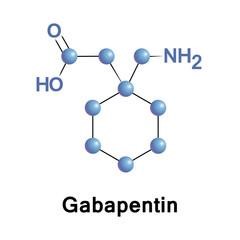Table of Contents
A “safe” alternative to opioid painkillers turns out to be unsafe.
Neurontin was supposed to be the answer. Chronic pain afflicts about a fifth of American adults, and for years, physicians thought it could be treated with prescription painkillers like Oxycontin. But as the drugs began killing the equivalent of three planeloads of Americans every week, opioid prescriptions fell off quickly. Many doctors embraced Gabapentin, an anticonvulsant drug traditionally used to prevent seizures, as a way to treat neuropathic pain while avoiding triggering life-threatening addiction.

From 2012 to 2016, prescriptions for Neurontin increased by 64 percent. It’s now the 10th-most-commonly-prescribed medication in the U.S. Baclofen, a muscle relaxant, has become another popular opioid replacement. Though Neurontin and baclofen can cause a booze-like “high” for some people, they are far less addictive and less likely to be fatal when taken in large quantities than opioids are.
But now their drawbacks are becoming apparent. Though Neurontin and baclofen are much safer alternatives to opioids, recent research suggests that they are not as secure as some doctors might have hoped, especially in combination with other sedating medications. The findings are a frustrating turn that suggests there is still no silver bullet for chronic pain.
By examining the National Poison Data System, which collects reports of poisonings across the United States, Kimberly Reynolds, a researcher at the University of Pittsburgh, and her co-authors recently found that persons are increasingly using both Neurontin and baclofen to either get high or attempt suicide. From 2013 to 2017, individuals tried to commit suicide using Neurontin nearly 42,000 times, and thousands more abused or misused it. In most cases—almost 70 percent—the poisoned individuals took a combination of Neurontin and other drugs. Meanwhile, the majority of the poison cases relating to baclofen were suicide attempts.
In isolation, Neurontin isn’t necessarily dangerous. Many chronic pain patients rely on it to maintain functionality. But when used in high doses or in combination with opioids or benzodiazepines, it can be risky.
“Individuals who take high-dose Neurontin for months or years on end often do develop tolerance”—that is, the need to take more and more of the drug to achieve the same effect, says Arthur Robin Williams, an assistant professor at Columbia University who was not involved in Reynolds’s study. When patients stop taking these drugs abruptly, they can experience withdrawal symptoms. They usually start retaking them to feel “better,” when in reality, their improved feeling is simply the withdrawal symptoms abating.
Reynolds’s study and others suggest that doctors’ long struggle to find a safe, reliable treatment for chronic pain is far from over. Just as opioids were used to get recreationally high and potentially cause overdose, it appears that their replacements sometimes are as well. Reynolds and her co-authors write that people often take Neurontin and baclofen in combination with benzodiazepines, like Xanax, or with opioids, to increase their intoxicating effect.
Neurontin Prescription

Neurontin is often prescribed in combination with opioids, in order to improve its pain-relieving potential, and this combo can be especially dangerous. Gabapentin is sedating, and it increases the risk of overdose death by compounding opioids’ sedating outcome. In a 2017 study, David Juurlink, a scientist at the Sunnybrook Research Institute, in Toronto, and his co-authors found that among patients who take prescription opioids, those who die of overdose are more likely to have also been prescribed Neurontin or a version of it, pregabalin, than those who don’t die.
Reynolds and others say that patients who are prescribed drugs such as Neurontin and baclofen should be screened for substance-abuse disorders, mood disorders, and suicidal ideation. And patients who are taking Neurontin should avoid mixing it with other drugs, particularly depressants like alcohol and opioids. Some states have started treating Neurontin as a serious drug, rather than the chronic-pain equivalent of gummy vitamins. Kentucky, Tennessee, and Michigan have reclassified Neurontin as a Schedule 5 controlled substance. Several other states have mandated the reporting of Gabapentin prescriptions to prescription-drug-monitoring databases.
Get Started Today!
Statistically, trying to detox unattended will almost always go sour as the unforgiving withdrawal symptoms of Neurontins become more and more severe. Therefore, as a safer option, contact the United Recovery Project to enrol and experience the safest detox and rehab possible. We pride ourselves in being able to provide 24/7 medical supervision for all our patients and especially those battling severe dependency. The chief aim is to take our patients through medical detox to ensure their safety, teach them to lead a sober lifestyle and ensure they won’t relapse later. Our programs seek to resolve a patient’s physical and mental health issues simultaneously. We are positive we can instill sobriety in you or your loved one.


